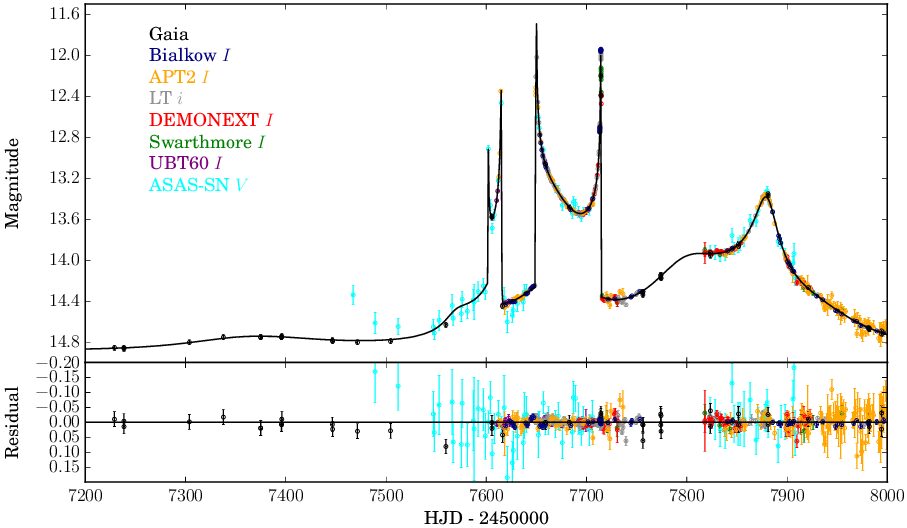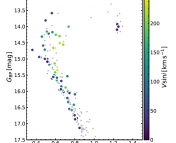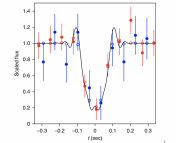Title: The multichord stellar occultation on 2019 October 22 by the trans-Neptunian object (84922) 2003 VS2
Authors: A Vara-Lubiano, M.; Benedetti-Rossi, G.; Santos-Sanz, P.; Ortiz, J. L.; Sicardy, B.; Popescu, M.; Morales, N.; Rommel, F. L.; Morgado, B.; Pereira, C. L.; Álvarez-Candal, A.; Fernández-Valenzuela, E.; Souami, D.; Ilic, D.; Vince, O.; Bachev, R.; Semkov, E.; Nedelcu, D. A.; Şonka, A.; Hudin, L.; Boaca, M.; Inceu, V.; Curelaru, L.; Gherase, R.; Turcu, V.; Moldovan, D.; Mircea, L.; Predatu, M.; Teodorescu, M.; Stoian, L.; Juravle, A.; Braga-Ribas, F.; Desmars, J.; Duffard, R.; Lecacheux, J.; Camargo, J. I. B.; Assafin, M.; Vieira-Martins, R.; Pribulla, T.; Husárik, M.; Sivanič, P.; Pal, A.; Szakats, R.; Kiss, C.; Alonso-Santiago, J.; Frasca, A.; Szabó, G. M.; Derekas, A.; Szigeti, L.; Drozdz, M.; Ogloza, W.; Skvaruc, J.; Ciabattari, F.; Delincak, P.; Di Marcantonio, P.; Iafrate, G.; Coretti, I.; Baldini, V.; Baruffetti, P.; Klös, O.; Dumitrescu, V.; Mikuž, H.; Mohar, A.
First Author institution: Instituto de Astrofísica de Andalucía – Consejo Superior de Investigaciones Científicas, Glorieta de la Astronomía S/N, 18008 Granada, Spain
Status: Published in Astronomy & Astrophysics [Open Access]
A disappearing act
On October 22, 2019, 39 telescopes in Central and Eastern Europe were looking at an innocuous, faint star. Because it was about to “disappear”. Who was the magician behind this brief but spectacular event? A remote object on the edge of our solar system. But little did it know that while it obscured the star, it was also revealing information about itself!
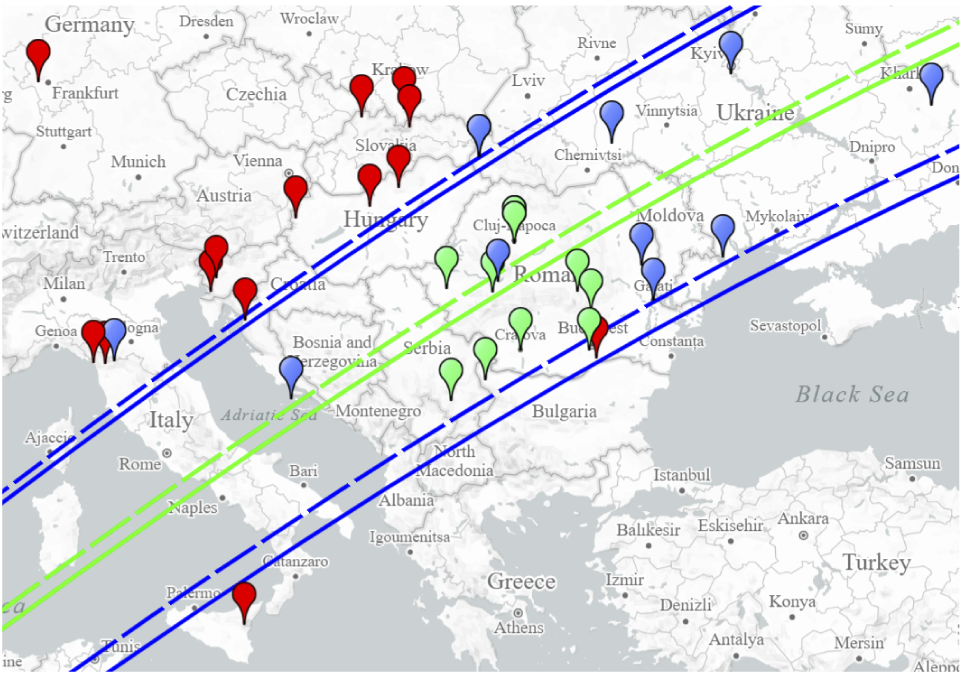
The alignment that causes the light from a distant object to be blocked by something nearer is called an occultation. A solar eclipse is a well known example, where the precise alignment between the sun, moon and earth causes someone on the surface of the earth to have their view of the sun blocked by the moon. It’s important to note that with a solar eclipse the whole earth doesn’t see all of the light from the sun blocked, one needs to be at just the right spot for the alignment to occur.
An international audience
Today’s paper looked for another precise alignment, this time of the remote solar system (orbiting beyond Neptune, also known as trans-neptunian or TNO) object called 2003 VS2 and a distant star called Gaia DR2 3449076721168026496. Even though 2003 VS2 is too far to directly image, its trajectory is well known. Because of this, another project was able to predict potential occultations, and where they would be visible on the earth. This included Central and Eastern Europe during the evening of October 22, 2019.
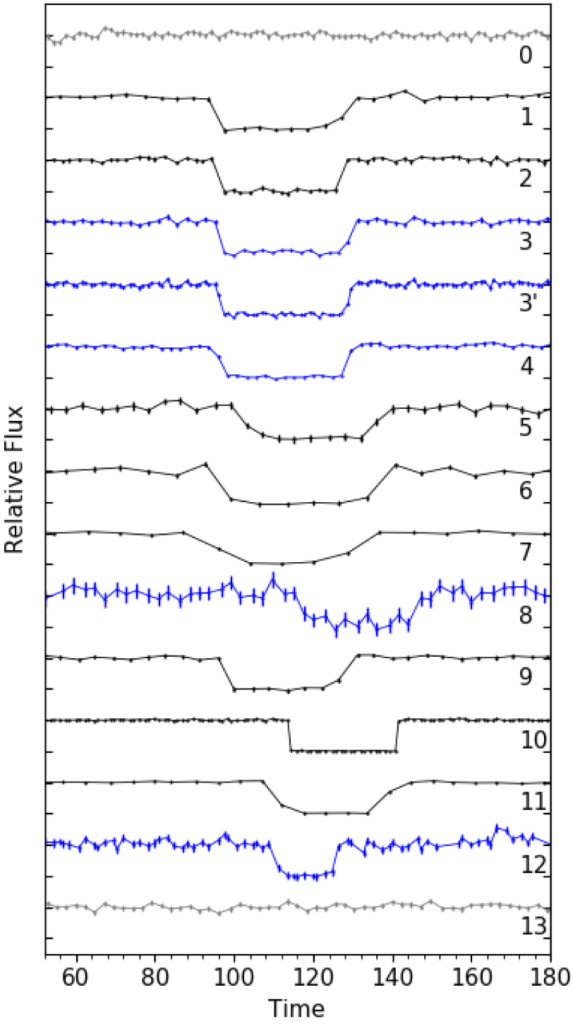
This was a unique opportunity to constrain the size of 2003 VS2. Since the alignment needs to be very precise, the geographical location of a telescope would determine if it was lined up to see the occultation. From one spot, an observer might just catch 2003 VS2 graze the star and only see a short occultation, while another could see a longer occultation if the center of the TNO is what passes over the star from their line of sight. By considering the various lengths of the occultation from many different positions it would indicate the shape of 2003 VS2. The authors of today’s paper coordinated 39 telescopes across 11 countries to attempt to capture the moment the star’s light disappeared. Figure 1 shows the various telescopes positions. The ones who successfully recorded the occultation are colored green and included sites in Romania, Serbia and Bulgaria.
The reveal, and the “magician” behind it all
Timing was key, as even the longest occultation was predicted to only last for ~30 seconds. All the telescopes (a mix of professional and amateur astronomers) had to be linked to the internet for timing protocols so that their data could be combined afterwards. Using the telescopes that measured the occultation and the nearest ones that did not, they were able to combine all of the light-curves (the measure of the brightness of the star over time) to track how long the occultation lasted from each position, shown in Figure 2. The occultation caused a dip in the brightness as the star “disappeared”!
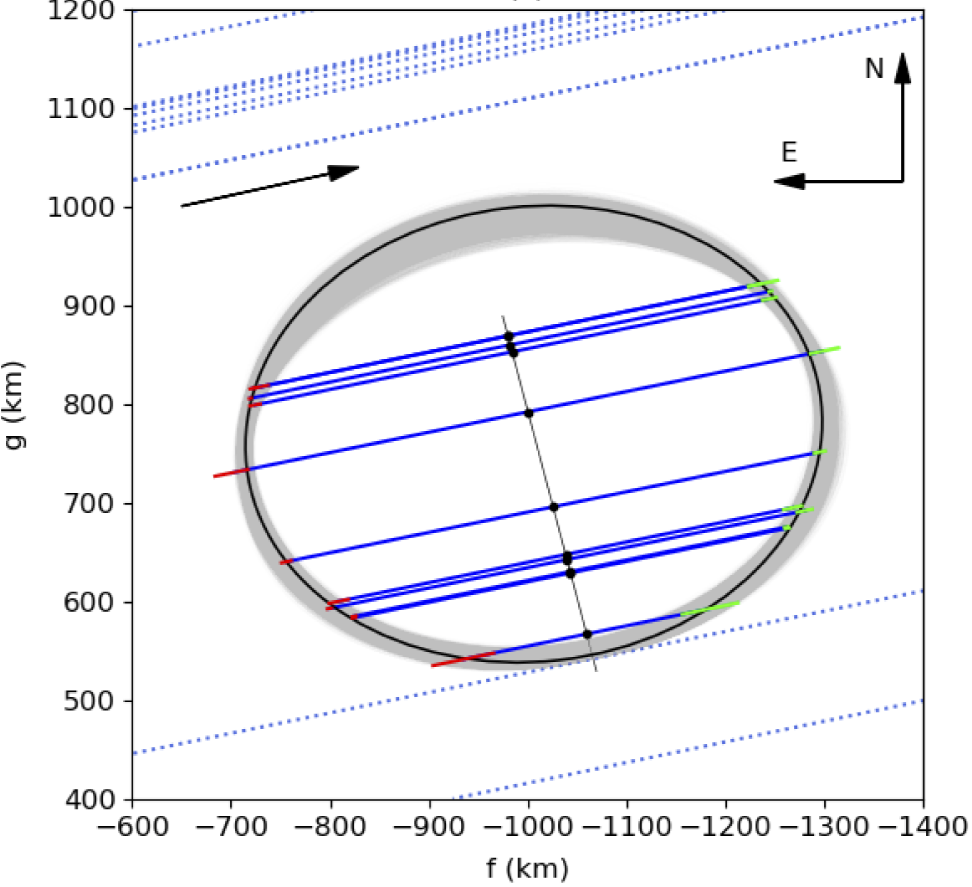
From the multiple observations they were able to map the shape of 2003 VS2. Starting from an assumption of it being ellipsoidal, the authors used a model to effectively convert the duration of the occultation from each telescope into a width for 2003 VS2. Figure 3 shows the best model for shape of 2003 VS2 with lines drawn across representing the occultations measured by each telescope. They were able to combine this model with other observations taken the following days to estimate a mean diameter of 2003 VS2 at 545 km, roughly the size of Poland.
More magical nights
This wasn’t the first occultation of 2003 VS2, but it was the first to constrain the size of the object. It’s also a powerful example of what the Gaia mission’s unparalleled catalog of positions, the accurate trajectory of trans-Neptunian objects, and internationally coordinated observations can achieve. Hopefully many more of these magic tricks can be seen, or not seen, in the future!
Edited by Kayla Kornoelje
Feature image credit: Lynette Cook/ W. M. Keck Observatory and https://gallery.yopriceville.com/

